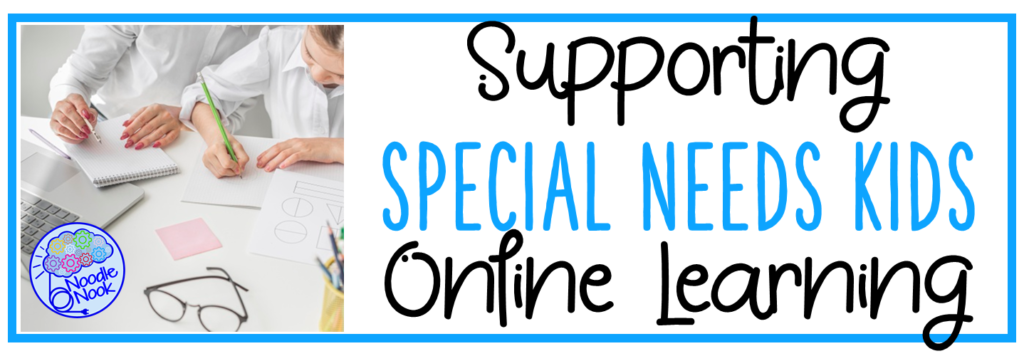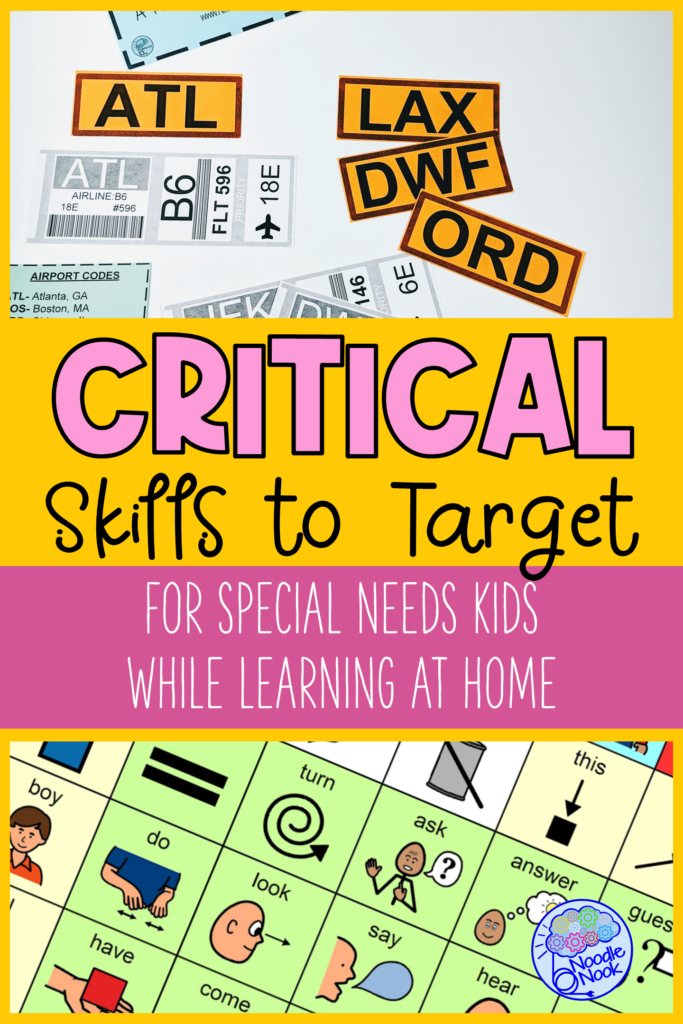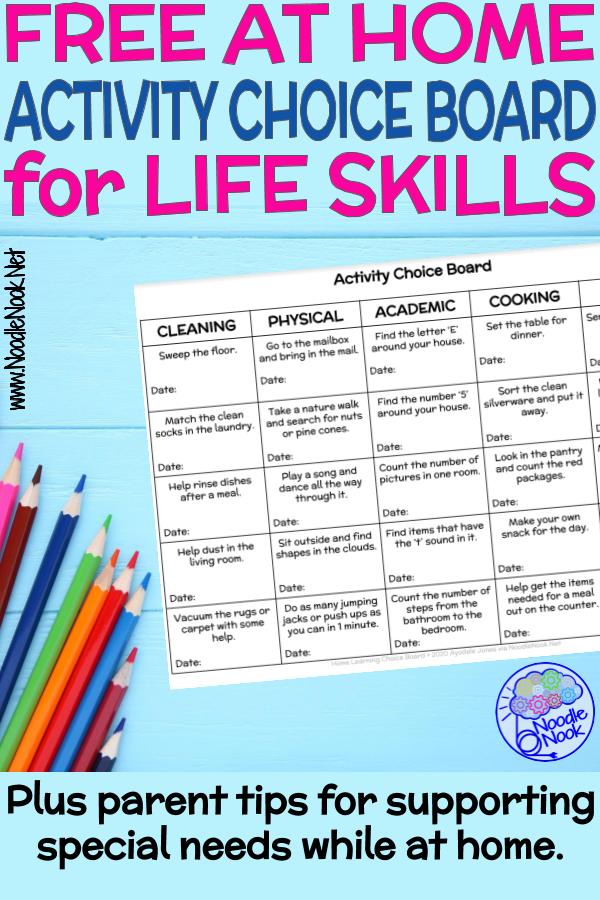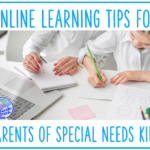Supporting Special Needs Students Online as a Parent
Everyone’s life has been spun around the last few weeks with mass quarantines and school closures. When this all started, we thought it would last a couple of weeks. we were so wrong! It seems now there’s no end in sight and many states are beginning to announce schools will not reopen this year. Finding a meaningful way of supporting special needs students online can be a real challenge for both parents and teachers. So, if you’re trapped in the house trying to figure out how distance learning is going to work for your child with special needs, here are some suggestions.
Parents Supporting Their Special Needs Child
If you are the parent of a child with a disability who has suddenly been thrust into the role of full-time teacher on top of everything else, these last few weeks have felt like a year! People with neurotypical children have struggled to find a way to keep them engaged in learning and also balance their online work responsibilities.
They don’t know how much easier they have it!
Supporting a special needs child online is no easy feat. You’re working with shorter attention spans, the need for tactile learning tools, and trying to meet the needs of a child who typically gets intensive support.
First off, there’s one thing you have to know. Every parent is struggling with some part of distance learning right now. This is hard. So give yourself some slack. You’re not expected to master this overnight.
With that in mind, there are a few things that you can do to support your child through the school closures and hopefully prevent a significant loss of skills.
1. Emphasize Structure
Schools will reopen again, I promise! When that time comes one of the most difficult things foremost kids is getting back on a normal schedule. As hard as that seems right now, it’s important that you retain some routine in your day.
For a lot of our students with special needs, especially Autism, routine is King. You want to put in place a broad schedule so that your child knows what’s in store on a daily basis. Sometimes an undefined daily schedule can lead to anxiety and increased behaviors partially because a child doesn’t know what’s coming next. That is actually true for most people. We crave routine and predictability, so build that into your home school.
Use a visual schedule, which can be as simple as a piece of paper with some general times and ideas. And also bust out a timer. The one on your phone or even the oven is perfect. It’s reminiscent of the bells ringing at school and it’s a good tool to mark the passage of time through each day. Read this post for free printable visuals you can easily implement.
And know one thing. I’m not suggesting that you plan every microsecond of every day the entire week, but students with disabilities are acutely aware of their daily schedule. If you’ve seen a spike in behaviors or increased anxiety in the last few weeks, it could be the lack of routine or the destruction of the normal school routine that has set your child off. Getting back to some semblance of predictability will help alleviate those issues. Make it a point to establish a schedule and a routine.
If anxiety seems to be a continued problem, introduce a social story to address some school closures and the idea that it will reopen soon. It’s important your child knows this will not last forever. Check out the one here about school closure and the free one about COVID-19.
2. Focus on Communication
Right now we are all looking for meaningful ways to connect and communicate with others. With your child out of school and access to peers limited, it can be difficult to practice communication while at home. On top of that, outside service providers are not seeing students with the same frequency or intensity as they would at school. That could mean your speech minutes are not as meaningful as normal.
Communication is one of those skills that erodes quickly, so you want to find a way for your students to practice communication as much as possible while school is closed. What that looks like will depend entirely on your child.
For some kids, you can supplement your communication by reaching out to friends and family for online chat time. Video will let your child still target interpreting facial expressions, work on maintaining eye contact, and also allow them to see someone other than you. Make yourself available so that you can coach your child as they speak and guide them to appropriate questions to ask or cue them to take turns while chatting… just control the urge to take over the conversation or answer for your child.
For kids who typically have access to a Voice output device (VOD) or AAC system at school, you may find that you’re doing without during the school closures. It’s wildly important to maintain consistent use of a communication system if that’s what your student uses to interact with others. Like I tell teachers, the only way your child will master their communication device is if you use it, model good usage, and make it a non-negotiable. You may be without a digital communication device during the closure. At the very least use yes and no pieces of paper or a paper core board. I just made a digital one available using your device’s default PDF reader that has some interactivity. No matter what you use, the point is to keep your child communicating to the maximum extent possible.
3. Target Tech Skills
We are all quickly finding out where our technology deficits lie. Supporting special needs students online is like a crash course in Ed-Tech! Truth be told, however, is that these tech skills are huge barriers to kids with special needs who are often shorted when it comes to tech ed.
Now is a great time for your child to learn the ins and outs of video chat, how to use speech-to-text, and how to access a phone’s functional apps like the calculator.
Tech skills like these are essential for independent living in the future. On top of that, they are skills that are difficult to practice in the classroom because of a lack of student-provided devices and firewall barriers. Take advantage of this. Have your kid command Alexa, send messages by text to speech, or email their teacher with voice output.
If you want some free technology lessons for your child (or yourself), check out GCF Learn Free. Start with the Online Safety, Internet or Email and then branch out from there.
4. Improve Functional Skills
There are so many independent living and functional skills that are essential for your child’s success after they graduate K-12. Feel empowered teaching Laundry 101, Cleaning the Bathroom 102, or auditing I’m Hungry, Now What? because these are skills every young person needs to succeed in life.
Even if your child isn’t slated for a fully independent life after graduation, it’s still very engaging to be in the kitchen while food is being prepared, get up and moving to support normal chores, and have extra time to spend with you while doing things in the house.
Sometimes those functional skills connect deeply with academics, like a child planning what they will order online with a menu. Menu math (like this free one here) is engaging, functional, and academic. For a more capable mathematician, calculate tax, discounts, and tip. (Grab our subscriber freebie for a printable to help you with this). For basic skills, target whole number addition, paying using the ‘dollar up’ method, or 1:1 correspondence with money.
5. Move… Please Move
Right now, your child is missing out on PE, recess, walking the halls, and moving frequently. If your child has been busy studying Netflix for the last few weeks, they’re probably not moving as much as they should. That can have a profound impact on work stamina, physical fitness, and mental clarity. All of these things will work against your child when they return to the classroom.
Be sure to schedule time for physical fitness every day. also, take time to have your child explore the Arts. You can access online keyboards to practice music, DJ with Incredibox, or watch YouTube videos to get busy with some art (like ArtHub). Really, the point is staying engaged and lessening the amount of mindless screen time.
My youngest son has loved using the yoga posing cards that come in my calm down corner kit. Any yoga will do though. It targets mind and body!
6. Academics Too
Yes, I can see that six-ton elephant in the room. It’s looking right at me.
I wish I could give you some very concrete answers to how to manage academics for your special needs child during online learning, but the truth of the matter is they have an IEP or 504 because they need adaptations and supports specific to them and their needs. To shoot out blanket academics to you would undermine the IEP you’ve fought for. With that in mind, I suggest you do these three things.
One, be sure you have a current copy of your child’s IEP. Take a minute to read through it, especially focusing on the goals. Then choose the ones you will target. It doesn’t have to be all of them unless you have the mental space and confidence to attack them all. Instead, pick the most critical skills or the ones you know your child has worked hardest to acquire.
Two, get materials to address those critical skills or for each IEP goal. Reach out to your teacher, put a post out on Facebook for others to help out with activities they’ve used, check out the resources your district is making available, or hop on Teachers Pay Teachers and snag a couple of activities. If all of this seems like too much, I suggest you head over to either Khan Academy or BrainPopJr.
Khan Academy is what I am using with my kids to supplement what is being provided by the district. It is a non-profit and they have a schedule template available for parents here. It is a great place to start if you are already overwhelmed supporting special needs students online. Download the app for basic skills and get started.
Three, think about how to make your home more educational. Start by setting up a space for ‘school’ in your house. Hopefully, that is away from the TV and feels like a workspace. Your child may only be able to ‘work’ for a few minutes before they need a break, but it’s a start. Be sure you’re going through the morning routine every school day including getting dressed (or at least changing into your ‘daytime’ pajamas).
Read and do math with things around the house. Use cereal boxes to read, do math, for number/letter identification or calculation. Search for things in the house by function or ask what items we find in the kitchen… it is just a way to engage the mind in academic activities while we’re held up in the house. There are lots of ways to engage in academics with everyday items. Try this Free Choice Board download I just put together. The point is to NOT let your child stay plugged in all day on mindless activities.
Well, there you have it. The six tips for supporting special needs students online learning as a parent. I also have tips for supporting special needs students online for teachers here. It may give you some more ideas as we all hunker down for the long haul.
Remember, you can do this.
CONNECT
Pinterest Instagram Facebook Twitter YouTube iTunes
Tips, tricks, resources, and FREE tools for teachers in Special Ed and Autism Units. Listen, read and watch to learn how to be more successful at Noodle Nook. And be sure to subscribe to the monthly newsletter TODAY!







Great article! I have high-functioning autism, and I always shudder to think about how challenging it would have been if I had been forced to do virtual learning when I was in school.
Thanks for posting 🙂
Comments are closed.